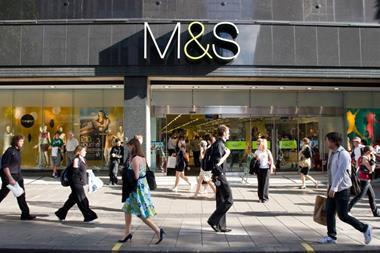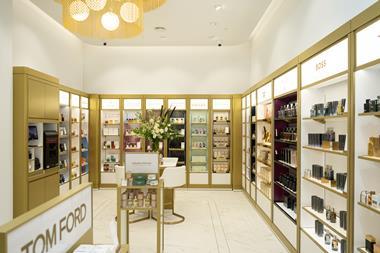Coffee shops may not be footfall drivers, but they increase dwell time. How can retailers best add them to their mix, asks John Ryan
Coffee shops: Questions to ask
- Franchise or own-brand?
- Secondary in-store location or discrete area?
- Is a cafe appropriate for your retail brand?
- Is a cafe a revenue earner or a customer service?
Installing a cafe in a shop or shopping mall for that matter might seem an unexceptional thing to do. Indeed, there are locations where it might appear that purveyors of the black stuff come close to outnumbering shops and it’s hard not to wonder if there might be a slight case of overkill.
That said, coffee shops and those visiting them remain an important element of a number of large retail propositions and for many they are seen as almost indispensable. But what do they add and are they worth sacrificing valuable selling space for?
Ashley Blake, head of retail portfolio management at Land Securities, says that putting standalone coffee shops in a mall may not drive footfall, but the ability to buy and consume a double espresso forms a workaday part of shopper expectations.
And as they are not footfall drivers, but do encourage dwell time, they have to be easily accessible. “There’s no point putting them in the basement or up on the top floor on a food court, as people will not go looking for them,” Blake comments. He adds that average dwell times in a centre that has coffee shops will be around 90 minutes, substantially longer than those without.
These then are an important part of keeping shoppers in a mall, giving them the chance to relax and then head off refreshed to hit the shops.
Store dynamics
Matters change, however, when you head in-store and a series of rather different dynamics come into play. For retailers, there are not the vast public areas that can be populated with ‘coffee karts’ or more permanent structures, without impacting on the performance of a store and the choice is therefore between an additional selling area or longer in-store dwell times.
This has led to some curious outcomes. Tim Greenhalgh, chief creative officer at Fitch, points to the New Look flagship just east of Oxford Circus: “Why would you put a Starbucks in a store where you can buy three outfits for the price of a cup of coffee?” he asks. “It does rather look as if they had a brainstorm and thought ‘when in doubt, throw caffeine at a problem’.”
This is, of course, an extreme example and a little unfair because prior to New Look’s arrival on the site in early 2010, this was a branch of Borders and Starbucks formed a central part of that proposition, so perhaps this is a case of trading on the familiar. Nonetheless, whether the two brands are entirely compatible is certainly open to question.
Perhaps the best example of a retailer being at one with an implanted in-store cafe or fast food restaurant is actually in Cologne where C&A has a branch of McDonald’s in the basement, adjacent to its young fashion department, Clockhouse. This is normally packed and unlike regular coffee shops, it acts as a downtown Cologne destination in its own right, meaning incremental footfall for the retailer.
The wonder is that Primark hasn’t done something of the kind as well, although it is fair to say that footfall is not necessarily an issue in a large number of its stores.
Consideration also needs to be given to where to locate a coffee shop if the green light is given to put one in a store. The dilemma that faces any retailer is that a coffee shop has to be accessible, but it should not interrupt trade and for those wishing to take a break they want and need to be able to see the shop,
but also to relax from the rigours of shopping it. Solutions to this vary and one of the more common is the glass-sided box that is part of the shop and yet separate from it.
The newly opened Next Home and Garden in Shoreham provides an example of this with a branch of Starbucks that is on the first floor, one side of which has a glass wall that affords views from the mezzanine to the action on the ground floor below.
However, there are alternatives. The Sainsbury’s Cafe Fresh concept, created by design consultancy Pope Wainwright, which is on show in the Crayford branch, is almost entirely discrete from the rest of the store.
There are 10 Cafe Fresh areas across the grocer’s estate and Julia Batcher, category planner for food service, explains the logic of their in-store position: “Wherever possible we locate [coffee shops and in-store restaurants] on the mezzanine floor adjacent to clothing as this is the best way to deliver a customer’s need to have a break, relax and meet up with friends. In other words, we are creating a relaxing environment away from the hustle and bustle of the store.”
In Crayford, the coffee shop is indeed next to clothing, but apart from the entrance, the great bulk of the cafe is hidden from view by a large wall.
As this is a very large store (Sainsbury’s tends to put cafes in branches of around 30,000 sq ft and above), look up and the white corrugated ceiling reminds you that you’re in a shed, in spite of the clean white counter and the tempting cakes that are on offer.
At the risk of blowing the budget, lowering the ceiling with a few rafters might seem appropriate.
Sometimes, in-store cafes may be as successful as the hosts into which they have been implanted. Blake relates how a branch of Waterstone’s in Berkhamsted had an in-store Costa coffee shop that proved so successful that Costa took the decision to open a standalone branch next door. Whether this was ultimately beneficial for Waterstone’s is a moot point, but it does perhaps prove the continued pulling power of a decent cup of coffee.
Format decision
There are two other decisions that need to be made when opting to install an in-store cafe. Do you go it alone and create your own coffee shop format, an option generally chosen by large chains such as Marks & Spencer, Morrisons and Sainsbury’s, or do you opt for a franchised operation where the big brands, Costa, Caffè Nero and Starbucks predominate?
If you do go down the own-brand coffee shop route, is it a matter of mass roll-out, or do you try to make a coffee shop that reflects the location?
Curiously, in spite of having Sainsbury’s branded cafes in most of its larger stores, the eponymous retailer does also have a number of Starbucks outlets in selected branches. Batcher is relatively tight-lipped about the reasons for this, saying only: “We have a small number of Starbucks franchises in stores where it meets our customers’ requirements. They are one element in the mix of our in-store cafe portfolio and we have found them to be a successful way of meeting customer needs.”
The upside of putting a franchised coffee shop into a store is the same as any other franchise in a shop – no fuss and a modest return on space that might otherwise be difficult and expensive to trade from successfully. The returns on an effective coffee shop, however, are such that where they are done well, they may well outperform the mainline areas of a shop.
Bill Cumming, owner and creative director at design consultancy Twelve, says that in-store cafes are for “refuelling, respite or relief” when shopping, and that very few retailers manage to do all three of these effectively. Oddly, however, it is the small independent coffee shops that have teamed up with independent retailers that tend to be most successful at creating both a destination and a sense of community.
Look Mum No Hands!, a bicycle shop in east London, shows how this works with a store where the two-wheeled fraternity can enjoy a cappuccino and a cake while having a bike repaired.
It’s a model that could be emulated by larger concerns, and probably was when Borders was around, and would buy a considerable amount of goodwill in the process.
The real issue for retailers is that a coffee shop remains semi-incidental and certainly not a core concern when planning a new store or refurbishing an old one. It is, however, a money-spinner at a time when money may be hard to come by.


























1 Reader's comment